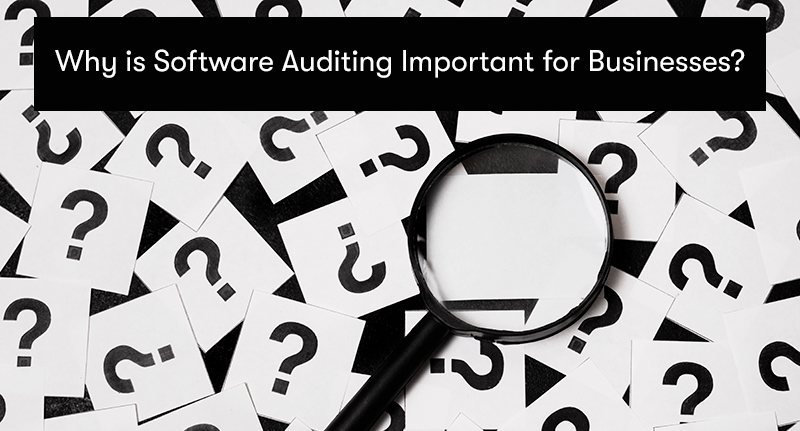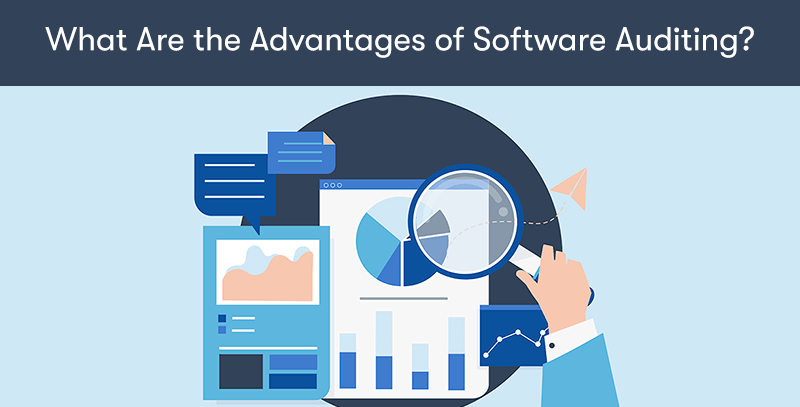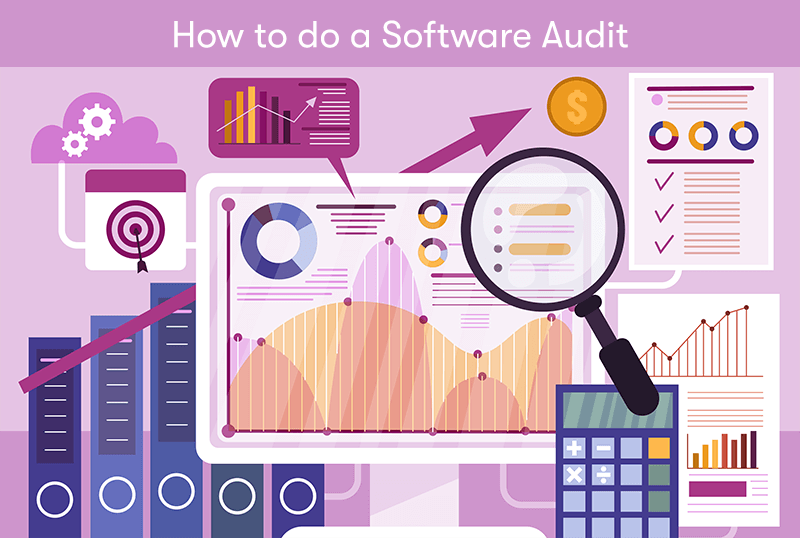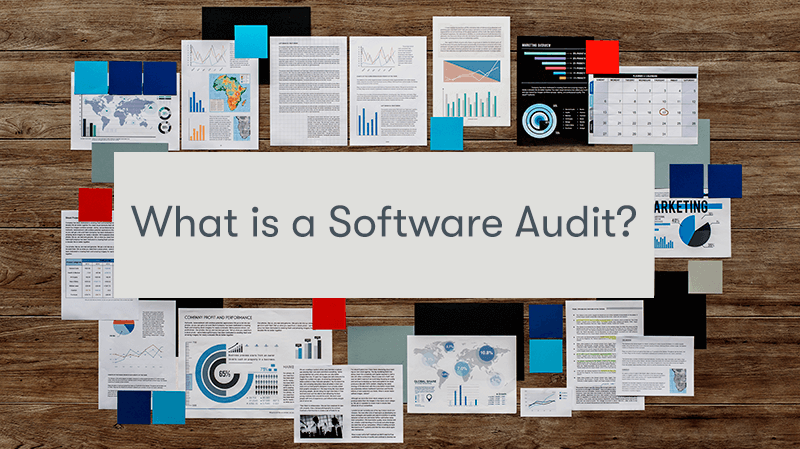What is a Software Audit?
Welcome to our in-depth exploration of a critical yet often overlooked aspect of modern business management: software audits. In this digital age, where software forms the backbone of virtually every operation, understanding the nuances and significance of software auditing is essential.
A software audit is a comprehensive review that delves into an organisation's software assets. It scrutinises these digital tools' usage, compliance, and efficiency, ensuring they align with legal requirements and business objectives.
In this blog, we will unravel the complexities of software audits, highlighting their importance in legal compliance, risk management, and strategic decision-making. Join us as we delve into the world of software audits, an indispensable practice in the realm of IT Asset Management and corporate governance.
What is a Software Audit?
A software audit is a comprehensive review of a company's software assets. This process typically includes several key components:
| Key component | Description |
| Inventory Assessment | Identifying all the software used in an organisation. This includes both licensed and unlicensed software, as well as open-source software. |
| License Compliance | Ensuring that the organisation complies with the terms and conditions of the software licenses it holds. This involves comparing the software used with the licenses purchased to check for discrepancies. |
| Software Utilisation | Evaluating how software is being used within the organisation. This can help identify underutilised software that could be a waste of resources. |
| Risk Management | Identifying risks associated with using unauthorised or outdated software, including security vulnerabilities. |
| Cost Management | Analysing software expenditure to identify potential cost-saving opportunities, like eliminating redundant tools or renegotiating contracts. |
| Legal Compliance | Ensuring compliance with legal standards and avoiding legal issues related to software licensing and use. |
| Policy and Procedure Review | Examining the organisation's policies and procedures related to software procurement and usage. |
Software audits can be conducted internally or by external parties. They are crucial in managing software assets efficiently, ensuring legal compliance, and optimising software investment.
Why is Software Auditing Important for Businesses?

Software auditing is crucial for businesses for several reasons:
Legal Compliance
Software audits help ensure that a business complies with licensing agreements. Using software without a proper license or beyond the scope of the license can lead to legal issues, including costly lawsuits and fines.
Security
Unauthorised or outdated software can pose significant security risks, including vulnerabilities to malware and cyber-attacks. Audits help identify such risks, allowing businesses to take corrective action to protect their data and systems.
Cost Management
Through software auditing, businesses can identify underutilised or unnecessary software. This helps in reducing costs by discontinuing licenses that are not needed and avoiding penalties for overuse.
Operational Efficiency
By assessing software utilisation, businesses can streamline their operations, ensuring that they have the right tools for their needs and that these tools are being used effectively.
Strategic Planning
Software audits provide valuable data that can inform IT strategy and planning. Understanding what software is used and how helps make informed decisions about future investments and technology directions.
Compliance with Standards and Regulations
Certain industries have specific regulations regarding data protection and privacy (like GDPR in Europe). Software audits ensure compliance with these regulations by verifying that the software adheres to required standards.
Asset Management
Keeping an accurate inventory of software assets is a part of good business practice. It helps manage licenses, plan upgrades, and ensure that the business is prepared for internal and external developments like new technologies.
Reputation Management
Compliance issues or security breaches due to improper software use can damage a company's reputation. Regular audits help maintain a positive image by demonstrating a commitment to legal and ethical practices.
In summary, software auditing is vital to risk management, financial planning, and strategic decision-making in businesses. It ensures that software assets are legally compliant, secure, cost-effective, and aligned with the business's goals and objectives.
What Are the Advantages of Software Auditing?

Software auditing offers several advantages for organisations, including:
Compliance Assurance
One of the primary benefits of software auditing is ensuring compliance with licensing agreements and legal regulations. This reduces the risk of legal penalties, lawsuits, and fines due to non-compliance.
Enhanced Security
By identifying unauthorised, outdated, or unsupported software, audits help mitigate security risks. Keeping software up to date and adequately licensed reduces vulnerabilities to cyber threats.
Cost Optimisation
Audits can reveal underused or unnecessary software licenses, allowing businesses to eliminate waste and optimise software expenditure. This can result in significant cost savings.
Improved Software Management
Auditing provides a clear view of the software inventory, helping organisations manage their software assets more effectively. It assists in making informed decisions about software renewals, purchases, and decommissioning.
Increased Operational Efficiency
Understanding what software is used and how it contributes to business processes can improve operational efficiency. Organisations can streamline workflows by aligning software usage with business needs.
Strategic Planning and Decision Making
Data obtained from software audits can inform strategic IT planning. This includes decisions on software investments, upgrades, and adopting new technologies.
Risk Management
Software audits help identify and manage software licensing, compliance, and usage risks. This proactive approach reduces the likelihood of unexpected issues disrupting business operations.
Support for IT Governance
Regular software auditing supports effective IT governance by ensuring software usage aligns with organisational policies and strategies.
Asset Documentation
A detailed inventory of software assets, including versions and configurations, is valuable for various purposes, including IT support, disaster recovery planning, and audits by external entities.
Reputation Protection
Maintaining legal and ethical standards in software usage enhances a company's reputation and credibility, which is crucial for customer trust and business partnerships.
Overall, software auditing is a critical practice for maintaining legal compliance, ensuring security, optimising costs, and supporting strategic IT management in an organisation.
How to do a Software Audit

Conducting a software audit involves several steps and requires careful planning and execution. Here's a general guideline on how to perform a software audit:
Define the Scope and Objectives
Determine what you want to achieve with the audit. This could include checking for compliance with software licenses, identifying unused software, or assessing software for security risks. Define which parts of the organisation will be included.
Assemble an Audit Team
Form a team with the necessary expertise, including IT professionals, compliance officers, and possibly legal advisors. Ensure the team understands the audit's scope and objectives.
Develop an Audit Plan
Create a detailed plan outlining the steps to be taken, including timelines and responsibilities. This plan should align with the defined objectives.
Inventory Software Assets
Collect data on all software used within the organisation. This can be done through automated tools that scan systems for installed software or through manual methods like surveys and reviews of purchase records.
Verify Software Licenses
Match installed software with corresponding licenses. Check license agreements for terms and conditions, ensuring the software usage complies with these terms.
Assess Software Usage
Determine how the software is being used within the organisation. Identify any software that is underutilised or not used at all.
Identify Compliance Issues
Look for discrepancies, such as unlicensed software or software exceeding the number of allowed users. Note any violations of license agreements.
Evaluate Risks and Implications
Assess the risks associated with any compliance issues or unauthorised software use. Consider the potential legal, financial, and security implications.
Prepare an Audit Report
Document the findings, including an inventory of software, compliance status, and any issues identified. The report should also provide recommendations for addressing any problems.
Develop a Remediation Plan
Based on the audit findings, create a plan to address any compliance issues, security risks, or inefficiencies in software usage. This might include purchasing additional licenses, discontinuing specific software, or implementing new policies.
Implement Changes
Take action based on the remediation plan. Purchase necessary licenses, uninstall unauthorised software, and update policies as needed.
Monitor and Review
After implementing changes, continuously monitor software usage and compliance. Regular reviews help maintain compliance and ensure that the software inventory stays current.
Remember, effective communication is critical throughout the process. Keep stakeholders informed about the audit's progress and findings. Additionally, ensure that the audit is conducted to minimise disruption to the organisation's daily operations.
How Do Software Audits Relate to ITAM?
Software audits are a crucial component of IT Asset Management (ITAM), which is a comprehensive approach to managing an organisation's technology resources. Here's how software audits relate to ITAM:
Integral Part of ITAM
Software audits are an integral part of ITAM processes. ITAM encompasses the management of all IT assets, including hardware, software, and related services. Software audits specifically focus on the software component of these assets.
Inventory Management
ITAM requires maintaining an accurate inventory of all IT assets. Software audits contribute to this by identifying all software used within an organisation, thus ensuring that the software inventory is up-to-date and accurate.
Compliance Management
ITAM involves ensuring that all IT assets are used in compliance with legal and regulatory requirements. Software audits assess compliance with software licenses and help manage legal risks associated with software usage.
Cost Optimisation
ITAM aims to optimise the costs associated with IT assets. Software audits can reveal underused or redundant software, allowing organisations to reduce costs by discontinuing unnecessary licenses or renegotiating contracts.
Risk Management
Both ITAM and software audits are crucial for risk management. Software audits help identify risks related to unauthorised, outdated, or non-compliant software, a key aspect of ITAM.
Strategic Decision Making
ITAM is not just about managing assets; it's also about aligning IT resources with business goals. Software audits provide valuable data that can inform strategic decisions regarding software investments, upgrades, and technology adoption.
Lifecycle Management
ITAM includes managing the entire lifecycle of IT assets from acquisition to disposal. Software audits play a role in various stages of this lifecycle, such as assessing software needs, monitoring usage, and deciding when to retire or upgrade software.
Policy and Governance
Effective ITAM requires robust policies and governance structures. Software audits help ensure software usage aligns with organisational policies and standards, contributing to overall IT governance.
In summary, software audits are a key aspect of ITAM, providing essential information and processes for managing software assets effectively. They help ensure compliance, optimise costs, manage risks, and support strategic decision-making in an organisation's broader IT asset management strategy.
Final Notes on Software Auditing
In conclusion, our exploration of software audits within IT Asset Management has highlighted their pivotal role in ensuring legal compliance, enhancing security, optimising costs, and aiding strategic decision-making in organisations. These audits, integral to ITAM, help maintain a comprehensive inventory, manage compliance risks, and inform policy and governance. They are essential for identifying underutilised resources, aligning IT assets with business objectives, and managing software lifecycle efficiently.
As we've seen, regular software audits are not just a regulatory necessity but a strategic tool, driving efficiency and risk management in today's technology-driven business environment. Therefore, understanding and implementing effective software auditing practices is indispensable for organisations seeking to leverage their IT assets fully while adhering to legal and ethical standards.


